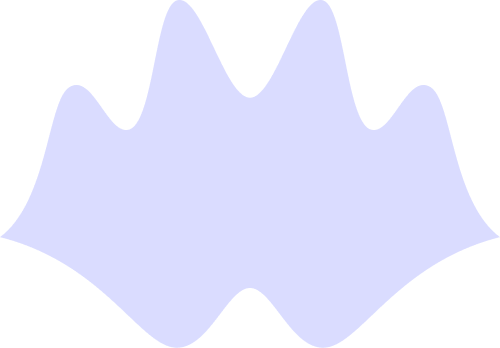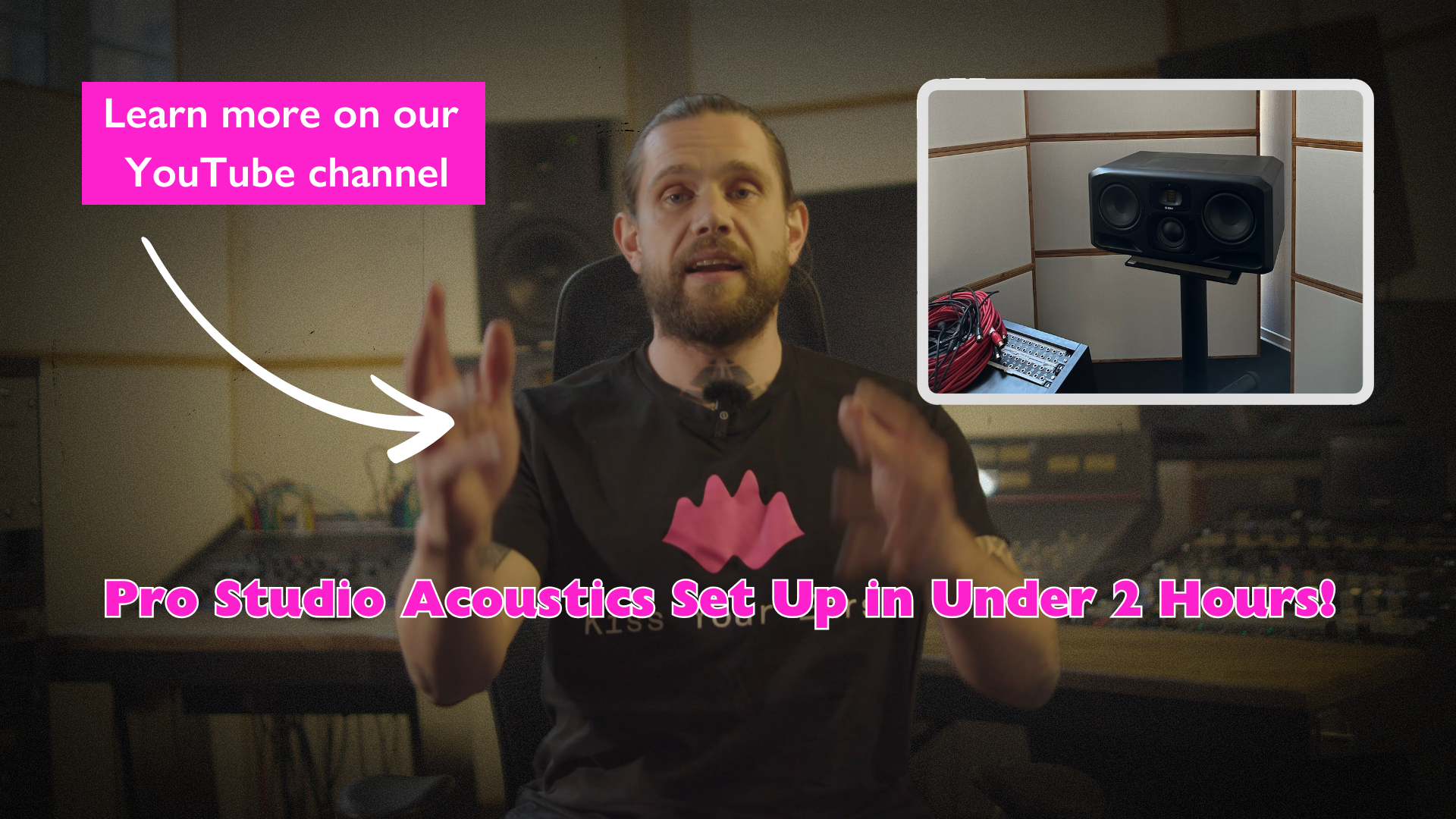How do I treat my studio on a budget?


Need to tame the bass in your studio?
Performance Acoustic Solutions are now accessible to EVERYONE.
Pro level acoustic treatment is the last element of a high end listening environment to become available at a professional standard to the average music maker.
We are spearheading an acoustics revolution.
No matter what your budget, and whether you want to use our off-the-shelf solutions or build your treatment DIY with our guidance, we have the best value solution for you.
With our easy step by step approach, you can transform your listening experience and trust what is coming out of your speakers. Be in control of your listening experience.
There's a reason the best in the business go with us…
Below you will find out about how to treat your room in a professional way without breaking the bank. We exist to democratise acoustic treatment so we have the most efficient solution for any budget.
Understand the big picture so you can stop obsessing about details that don’t actually matter.


Premium Acoustic Treatment for Modern Music Makers
Most rooms have low frequency problems (everything below 300 Hz). When left untreated, mixes will not translate to another system/room.
How low can you go with proper use of velocity absorption?
With enough units in the volume of space, down to 40Hz is possible.
KYE King Kong Bass Traps are velocity absorbers that have been engineered to the point of maximum achievable effectivity (They attenuate 40 Hz at 60%, 70 Hz at 80% and 100 Hz at 85% when an appropriate volume of them is brought in to the volume of space).
When to use velocity and/or pressure absorbers?
In any case, you should be looking at adding a substantial set of low frequency reaching broadband velocity absorbers to your room first. That's how the pro's do it, and for good reason.
Tuned resonant systems should by no means be your first point of treatment. They are designed to hone in on one particular frequency as a latter stage solution. For this reason, among others, they are quite expensive, and never the first wave of treatment.
The ORDER of Room Treatment Effectivity
- Room structure
- Speaker placement and listening position
- Velocity absorption
- Pressure absorption
- Diffusion
Note: the first 1-4k of a small room treatment (anything under 40m2) will most likely be exclusively on velocity absorption! For many, that is all they need.
The bass first approach:
Due to space and budget limitations, absorption is almost ALWAYS the most important factor in the control of room acoustics.
The theory behind the system we follow for low budget music production studios is to always use the input budget to prioritise fixing the low end (thereby fixing most of the rooms’ other issues along the way). Low frequency control is a widely misunderstood and somewhat mysterious practice. We aim to clarify this for you. No more second guessing your mix decisions!
So… How should I treat my room?
Start with a low reaching velocity absorber and hit the bass broadband/wideband as much as possible until exhausted. Again, that’s how the pro’s do it and it’s just logical. If our budget stops there, then that is the best use of it.
The controversial secret: for most normal shaped rooms (think a rectangle apartment bedroom, for example) the set-up rules are the same for the first 80% of the work. The last 20% is the more expensive part and in most cases unnecessary. Most acousticians will not tell you this.
If you prefer to build the units yourself, with our tried and tested designs, we can guide you through the entire process, from planning to installation. You can bypass countless hours of research and planning. From finding the right materials in your area and within your budget, to choosing the correct installation system for your walls and ceiling. Nobody has more experience and better resources for doing this on a budget than us!
What even is a bass trap?
Not all that are called bass traps are actually bass traps…
A “bass trap” is an absorber operating heavily in the bass register.
Most off-the-shelf ‘bass traps’ don’t treat sub-bass.
Treating sub-bass is the key to a proper room treatment.
If you are looking for tri-traps, foam “traps”, cylinder traps, or thinner absorbers, you have already been misinformed…
The truth is that almost nobody actually understands acoustics, much less the practical application of acoustic treatment. Many are really insecure about it, and most get really hung up on details that don’t really matter when the big picture is taken care of properly.
What are the products made of?

The structural frame is the most over engineered on the market. They are extremely durable!
Is it sustainable? The Ecolux series is made with FSC certified pine, vegan fabrics, environmentally friendly absorptive material made from natural wood fibres and is 100% upcycled
Not all absorbers are made the same.
We have tried every filling material possible: rockwool, glass wool, basotect, other acoustic foams, hemp, jute, etc. and we chose: recycled wood fibre. Why? It's very effective, more environmentally sound and nicer to work with.
Unlike products made with other filling materials, you can eat it (please don’t eat it).
The ONLY equivalent on the market is FLIPPING 600 EUR! Compared to the King Kong Premium at 170 per unit, and King Kong X at 140 per unit.
How do we keep the price down while offering higher quality?

The answer is that we do batch production, a lower profit margin and a higher volume of customers. We do this to increase the general quality in the industry. This is Acoustics Activism.
Why you should use the same depth absorbers for BOTH early reflections AND bass trapping (corner location) functions
You should use the same depth & density for both functions: ERPs and BTs.
If you use thinner absorbers for the high frequencies and thicker absorbers for the lows, then you could end up with the following situation: ALL absorbers absorb the mids and highs and only the optimised density deeper absorbers can control the low frequency energy, leaving it resonant in the room alongside very absorbed highs.
HOW MANY? What amount of bass traps are required to get proper low frequency control
How many do you need? It’s about the amount you add relative to the volume of space!
The exact number of optimised bass traps you need in your space can be calculated with the volume of your space and your usage. Acoustic treatment is primarily about depth, density and surface area. Others prefer to portray it as a mysterious magic!
Our products are designed and engineered to perfection. We have processed thousands of orders over the years, and it shows.
Over years of data collection, we have simplified the formula to be as follows, with the King Kong units:
Minimum control / production studio: 1 x KK per m2 of floor space
Basic control / production studio: 1.2 x KK per m2 of floor space
Professional control / mixing studio: 1.5 x KK per m2 of floor space (this is where most customers aim for, it's the real "sweet spot" for getting to a professional result on a budget).
Advanced control / mastering studio: 1.7 x KK per m2 of floor space
The above should act as a foolproof guide for how many velocity absorbers to bring into the studio to create that 80/20 “low hanging fruits” amount of acoustic control. That “sweet spot”.
Again, you can add pressure absorbers and diffusers once the broadband control of the room is sorted.
If you are really lost, and just want a reliable solid “fix” of the room without learning too much about it, you can go for “Basic control / production studio: 1.2 x KK per m2 of floor space” and you will absolutely have the results you crave.
You can go deep into the formulas in our resources if you are interested.
So, how many bass traps do I need? A summary:
Our research proves that 1.2x King Kong Ecolux trap per m²of floor space is an ideal starting point for professional treatment, and probably is all you need. 1.5 x KKX per m² is a superb sweet spot. For high-end mastering, go for 1.7x per m².
(Our room acoustics data was initially gathered from 500+ rooms treated with Kiss Your Ears products)
Consider the following graphs:

They show a BEFORE and an AFTER measurement of a 25m² studio in Berlin from 40 Hz to 500 Hz (with psychoacoustic smoothing). Vertically, we see ca. 50dB of amplitude, horizontally, we see frequency, and coming towards us is the dimension of time (up to 300ms). From the measurement above to the measurement below, we can see that the “ringing” (a.k.a. resonances) in the sub-bass has diminished drastically (even the brutal 55Hz resonance)!
Furthermore, the frequency response in Sound Pressure Level has levelled (a.k.a. “flattened”) considerably. This was not achieved with just two bass traps. There are 30 x KKX Ecolux series traps in the 25m² room! This is a dramatic result, based on the consistently delivering 1.2 x KKX per m2.
World-class results for professional music makers.
Set Up: Corners
There are 12 dihedral corners in a cuboid room.
Placing thick velocity absorbers 45 degrees over corners is the best way to maximise the use of their depth and density. This allows them to absorb the lowest frequencies relevant to their design via the ¼ wavelength rule. It also allows them to take up minimum space in the room.
You can also place the corner units horizontally (lengthways over corners) for increased depth/effectivity!

Set Up: Surface!
Walls which are acoustically reflective create sonic images which are akin to the visible images
of loudspeakers in a room with mirrors covering all surfaces.
Ideally, you would cover every reflective surface in the room. Practically, this is not usually possible.
For this reason, we focus first on ERPs, or Early Reflection Points.
Placing the absorbers over the early reflection points on the wall (ideally with some sort of air gap) is how we begin to create the stereo image, reduce the reverb time and create a more balanced SPL reading by removing comb filtering, etc.

The more surface area of your early reflection points, the better.
You can build walls out of the KK traps for maximum effectivity. A wall of 8 x KKX is a more effective absorber than 2 x KKX attached to the wall, as it can capture a larger splash radius of a directional sound wave as well as: This also captures the “wall to floor” dihedral corner in the room, which can offset the necessity for covering the “wall to ceiling” dihedral corner.
Practical Diagrams
Below is one way to set up a ca. 15m2 room, following the [sequential] King Kong Room Treatment System we had pioneered from 2018 to 2022. You may be familiar with it. By synergistically attenuating the room’s resonances, we can create a high end audio workspace that doesn’t break the bank. We can add to it later without ever making an older phase obsolete, due to the modular nature of the system.

But, that’s not the only way to set up! In fact, there are other ways to reach similar results but without a complex installation!

In the above diagram, we can equate a similar result to that of the previous system.
But, this version doesn’t need a complex install so will save time and money there!
Every placement here is horizontal, this gives a lot of structural stability so we can stack the units on top of each other without a complex installation (notice nothing is fitted into the ceiling either).
The front units are horizontally orientated (lengthways over dihedral corner) which allows for a lower reaching absorber due to the ¼ wavelength rule.
Each early reflection point placement is a larger “wall”. Again, this allows for a lower reaching absorber due to the ¼ wavelength rule (including a 10 cm air gap behind the ERP walls), as well as the increased splash-radius-catching surface area.
With these 21 x KK traps in the room, we are looking at a similar result to the previously demonstrated set up system of the same amount of units. That is because it is really a question of the volume of absorbent to bring into a volume of space.

So what kind of results are possible when we treat a studio properly and use this kind of method?
Below are a series of visual representations of this first wave of treatment, following the 80/20 rule (20% of the work gives you 80% of the results). These are very precise readings. Remember, your hearing is actually in frequency bands so it would look even smoother than this.
Waterfall graphs show level against time and frequency, but cannot give any information about directional effects. But, we are looking mostly at omnidirectional frequencies and need to Evaluate the dimension of time (resonances), so they are great for examining BASS behaviour.

So, first we have a some examples of an "installed" system, with various sizes and amount of traps:

Since we are looking at the resonances, to read a waterfall graph like this, we do not focus on the top aka. the SPL (think of that as the skyline).
Instead, we focus on the bottom of the graph, where we want to see empty white space appear to indicate that the resonant frequencies have stopped ringing out. Think of that as the shoreline. We want to focus on the shoreline - not the skyline - when looking at waterfall graphs.
Vertically, we see amplitude, horizontally, we see frequency, and coming towards us is the dimension of time (up to 300ms).





Next, we have a some examples of a “no install” or “easy install” system, again with various sizes and amount of traps (and with equally impressive results!)





We have a vast archive of data so we are happy to share more upon request.
Still think that only membrane traps can deal with the bass?
Notice the irregular placement throughout the series of examples. This quite clearly demonstrates that it’s about the amount of optimized velocity absorbers to bring into the volume of space. This does not work the same for any off the shelf absorber. It must be well designed to reach the low end properly.
Fundamental - Mass
Mass is a key concept in acoustic treatment. Our research proves that 1.2x Ecolux trap per m2 of floor space is an ideal starting point for a professional treatment, and probably is all you need. You should always be suspicious if a company is recommending 4 absorbers to treat a 20m2 space (a 20m2 room usually presents ca. 75m2 of potentially reflective surface). It just doesn't work like that.
We have THE FIRST professional high end off-the-shelf acoustic solutions. Since 2018 we have made this our flagship product and service, and still nobody does it near our standard! The simple truth is that all other off the shelf acoustic solutions don’t feature the MASS required to properly harness low frequency energy in a standard studio size volume of space.
After that? You can add pressure based absorbers if you have any resonances at ca. 40Hz or less that remain audibly/ problematically. You can add diffusers to brighten up the room, particularly the back end of the space (all wall and ceiling surface available).
For most, that is way more than they initially expected and we all go home happier.
However, you may have a 30 Hz modal resonance in your room and a subwoofer that activates it. In this case, the next step would be tuned absorption. The aforementioned pressure traps, a.k.a membrane and diaphragmatic absorbers, etc. are the weapon of choice here.
When all of this is done you may want to add diffusion. This is the last step in the order of effectivity as it is the least effective process and relatively bad ‘bang for your buck’ by design. Most diffusers are only effective in high frequencies and anything below high mids requires large designs that are expensive to commission. Furthermore, they must be placed 2-3 times the lowest diffuse wavelength away from the speakers and listening position, furthering their impracticability in small rooms.
A final optional piece of the puzzle: speaker EQ software.
It is almost a matter of taste. Sonarworks and other digital solutions do not compensate for the dimension of TIME - therefore resonances must be solved first- but it is recommended as a final step after the bass traps handle the room’s resonances. Without adding the bass traps first, you may end up in a messy and confusing situation!
Do I have to treat my entire space at once? We have optimised our products so that they can be added modularly when your budget allows! You can always upgrade later.

Our guarantee: We can offer you the most effective and best value or you can have your money back - and we challenge you to find an alternative way to get more value/ a better value (cost to effectivity) from your room!
Come to us first, instead of wasting your time and money with ineffective products. We see it time and time again!
We can help you easily achieve results previously commercially unachievable for less than €10k for as little as €2-3k.
You don't need to do the full space ship/ control room vibe - you can come in at ANY price point and get the best value on the market with us. That's the basis of our USP.

It’s often surprising how quickly they disappear once you put them in place. In fact you may even realise you want more than the recommended 1.2 - 1.5 per m2.







